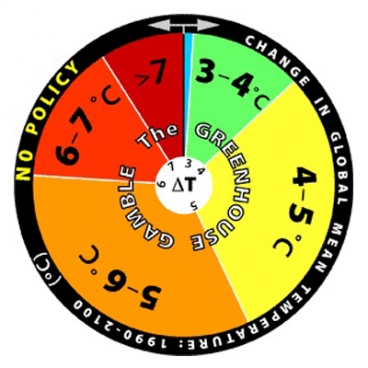
“Our results show we still have around a 50-50 chance of stabilizing the climate†at a level of no more than a few tenths above the 2 degree target, said Ron Prinn, co-director of MIT’s Joint Program on the Science and Policy of Global Change and a co-author of the new study. However, that will require global emissions, which are now growing, to start downward almost immediately.
That result could be achieved if the aggressive emissions targets in current U.S. climate bills were met, and matched by other wealthy countries, and if China and other large developing countries followed suit with only a decade or two delay. That 2 degree C increase is a level that is considered likely to prevent some of the most catastrophic potential effects of climate change, such as major increases in global sea level and disruption of agriculture and natural ecosystems.
The study used the MIT Integrated Global Systems Model, a detailed computer simulation of global economic activity and climate processes that has been developed and refined by the Joint Program on the Science and Policy of Global Change since the early 1990s. The new research involved hundreds of runs of the model with each run using slight variations in input parameters, selected so that each run has about an equal probability of being correct based on present observations and knowledge.
Other research groups have estimated the probabilities of various outcomes, based on variations in the physical response of the climate system itself. But theMIT model is the only one that interactively includes detailed treatment of possible changes in human activities as well – such as the degree of economic growth, with its associated energy use, in different countries.
“The nature of the problem is one of minimizing risk,” explains Mort Webster, assistant professor of engineering systems, who was the lead author of the new report in an article published by MIT’s new office penned by David L. Chandler. “That’s why looking at the probabilities of various outcomes, rather than focusing on the average outcome in a given climate model, ‘is both more scientifically correct, and a more useful way to think about it'”, he says.
Regardless of how much one can follow the technical description of the analysis, the gist of it is that swift action is key. I think it’s great to see this important message being reinforced by such a reputable institution.
By the way, this post is part of Blog Action Day 2009 which takes place today and is dedicated to, you guessed it, climate change. Blog it on, folks!

![Reblog this post [with Zemanta]](https://img.zemanta.com/reblog_e.png?x-id=2f4b783d-7865-4af7-8041-7716ef1010fa)





“It’s amazing what people can do to make the world a better place. Though, I have to say, this wouldn’t have had happened if we were more cautious about our environment (debatable as it may be), it’s still nice to know that alternative sources of fuel are being more of a trend.â€